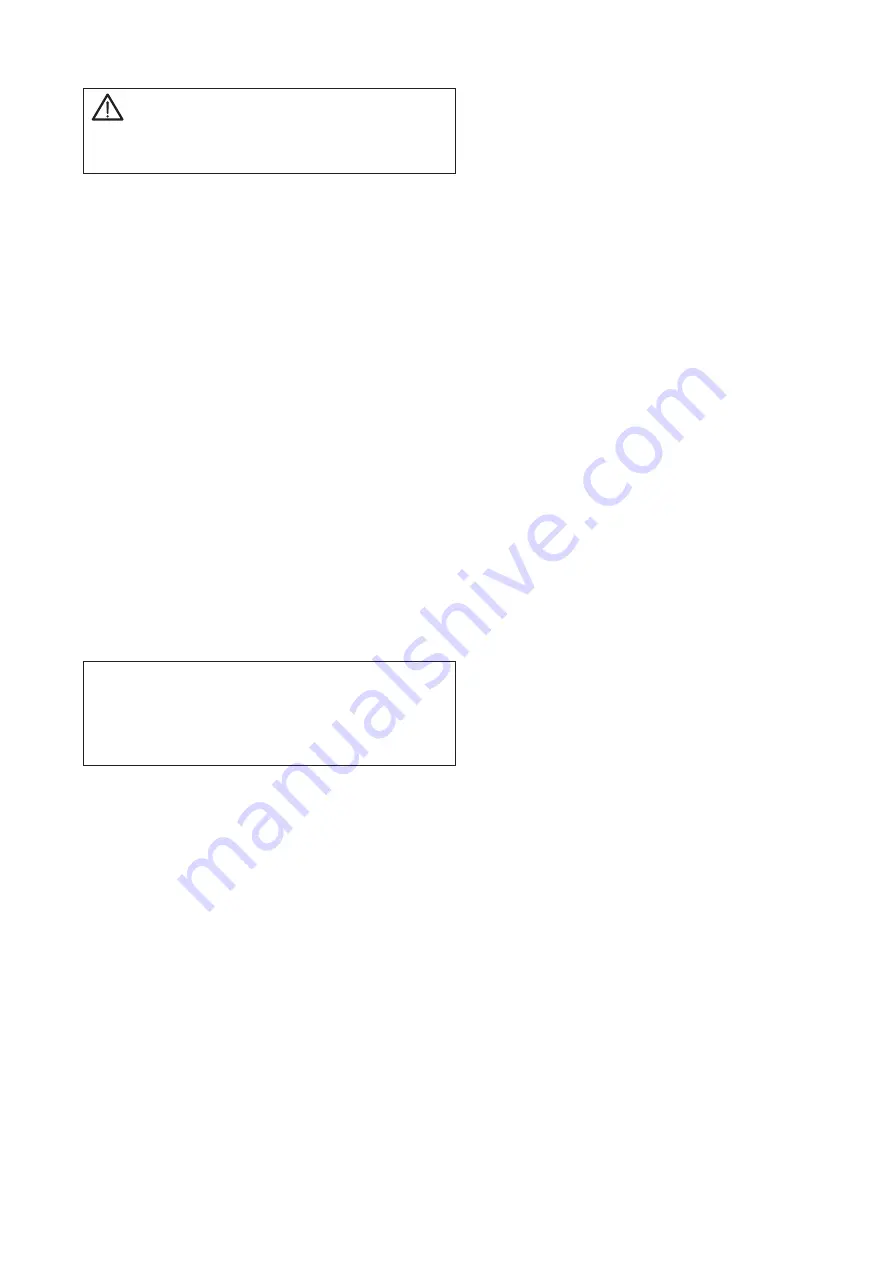
7
Disassembly - Reassembly
(See Fig. page 1)
Changing the spray gun
1. Shut off the air and material feeds to the gun.
2. Depressurize the circuits.
3. Remove the 2 screws (25).
4. Take out the gun.
5. Fit the replacement gun and change the seals (16 and 17).
6. Re-fit the 2 screws (25).
Needle packing and needle
1. Unscrew the cap (3) and remove the spring (4).
2. Hold the entire needle and piston (8) and pull it towards the back.
3. Unscrew the screw (5) from the piston (8) and remove the spring (6)
and paint needle (7).
4. Remove the air cap (23), the paint nozzle (22) and the insert (21).
5. Remove the packing screw (19).
6. Clean everything well with cleaning agent and then blow out with air.
7. Re-fit the packing screw (19).
8. Re-fit the needle and piston assembly .
9. Re-fit the spring (4) and the cap (3).
10. Re-fit the insert (21), the paint nozzle (22) (screwing torque 30 Nm)
and the air cap (23) by hand.
Before any intervention on the spray gun, shot off the compressed
air supply and depressurize the by controlling the opening of
the spray gun.
VARNING
Before reassembling the different components:
• Clean the parts with the appropriate cleaning agent by means
of brush.
• Install new seals after having lubricated them with PTFE grease.
• Install new parts if necessary.
Troubleshooting
Introduction
Always commence troubleshooting by checking the general condition
of the spray gun. This can most easily be determined by test spraying,
which provides an opportunity for checking the spray pattern and capacity,
air leakage and gasket leakage.
Types of problems
Collection of information which makes it possible to identify the error
symptoms applicable to the spray gun in the event of malfunctioning
is a matter of vital importance. Identification of symptoms makes it possible
to decide whether the spray gun itself is the direct cause of the malfunc-
tioning or if this may have been caused by an external factor.
The following external factors can cause malfunctioning and should be
thoroughly checked:
1. The quality of the air, i.e. content of moisture, dirt particles and oil.
2. The quality of the paint, i.e. its viscosity, purity. etc.
3 The air and paint pressure in relation to viscosity of the paint and
nozzle combination used.
4. The size of the air/paint hoses.
Troubleshooting chart
(See page 8)
Distribution ring
1. Remove the air cap (23) and the paint nozzle (22).
2. Remove the distribution ring (20) by screwing on the air cap (23) a
few turns. Withdraw the distribution ring axially from the body (13).
3. Re-fit the distribution ring (20) by mating it with a guide pin in
the body (13).
4. Re-fit the paint nozzle (22) (with torque 30 Nm) and re-fit the air cap
(23) (tighten by hand).


























